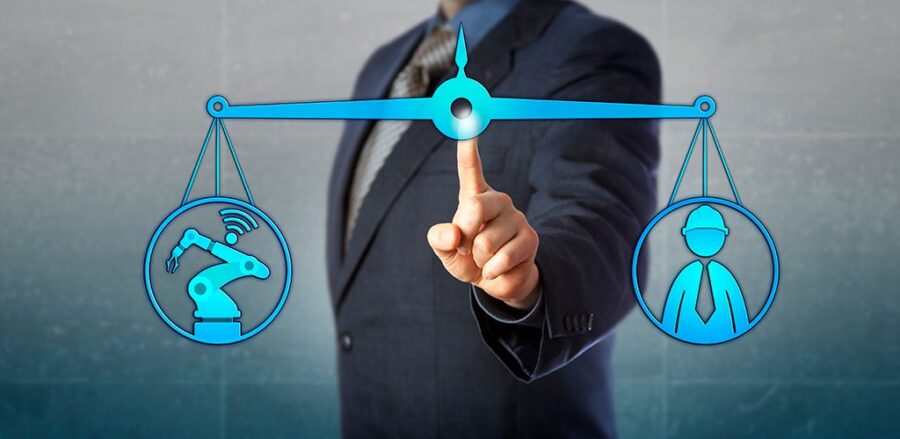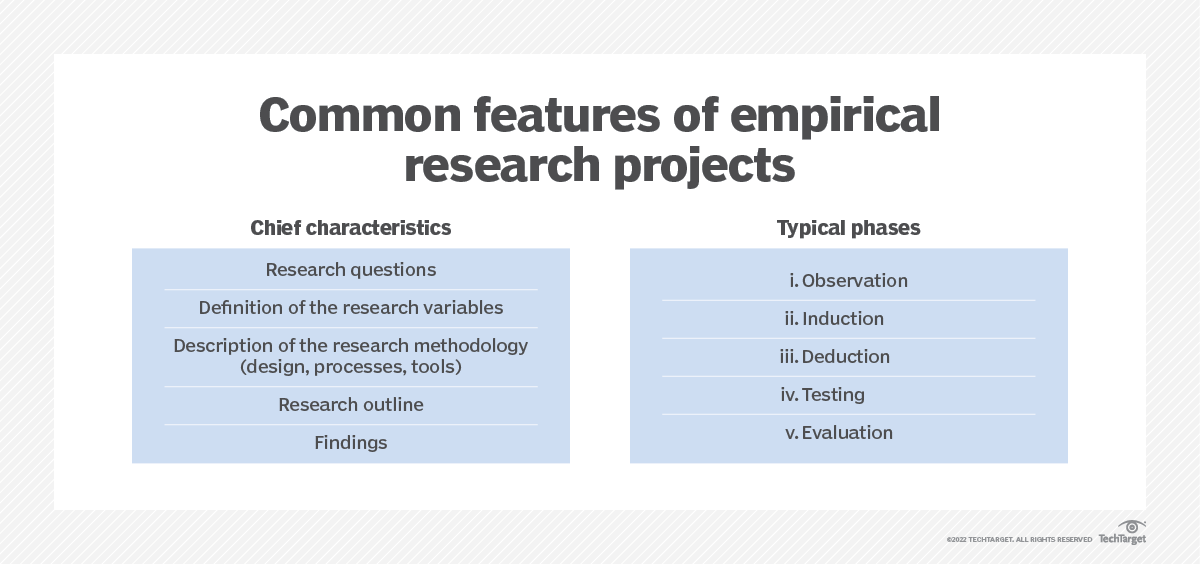Announcements
- Artificial intelligence and machine learning continue to create value streams across different industries and verticals. With significant challenges standing in the way of AI Integration, the three-day Machine Learning & Artificial Intelligence summit features free talks and presentations from industry experts to help successfully break through barriers and take your analytics strategy to the next level. Join live or on-demand to discover the advantages of incorporating advanced analytics into your business strategy, and learn exactly how to do it from the world’s leading BI experts.in the form of live webinars, panel discussions, keynote presentations and webcam videos.
- The workplace is still reckoning with how the pandemic fueled emerging trends in remote work, work/life balance, productivity and generational attitudes towards what defines a successful career. Join the three-day Transforming the Future of Work summit to hear from leading HR visionaries and experts who will share how businesses can negotiate the lasting impacts of the changes Covid-19 wrought on the workplace. They will examine the full employee experience, from onboarding and recruitment, to culture, engagement and innovation.

The concept for reshaping human work through cyber manufacturing, Industry 4.0, and cyber-physical systems.
The Automation Balance
In the 1980s, after graduating college, I bumped around for a few years trying to “find myself” and pay off the student loans that I’d racked up at a time when the economy was slow. While still in school, I had a guidance counselor tell me that there was no future in computers. However, even while working towards a degree in astrophysics, I spent an inordinate amount of time in the computer labs at the University of Illinois because I could do things with computers that were impossible otherwise.
Over the years, I’ve watched automation transform companies and society for good and ill. I remember watching a typesetting company (using up-to-date Linotronic software and hardware) go from a multi-million dollar company to broke within a year in the wake of desktop publishing. I remember trying to make the case to a clothing retailer’s accounting payables, and receivables section that their jobs were not in danger from automation, only to watch as many of them were laid off. When I started writing, I was making about $20,000 a book to write about HTML and JavaScript. Today, writing a book is a fool’s errand unless you try changing how people think about things. I don’t think I’ve made a profit from a technical book in the last decade, despite having written a fair number of them.
This week, DSC featured three articles: Ajit Joaker’s piece on the rise of computer-generated art increasingly replacing human artists, Osama Rizi’s article on the automation of ports, and Manoj Kumar’s article on the automation of Bills of Lading, the long manifests that indicate what a given shipping container holds. What ties these three together is that automation systems also replace longshore workers at ports and packers at fulfillment centers. Longshore work is succumbing to standardization of containers, electronic tracking via beacons and RFID chips, and the orchestration of the containers onto trucks (which are also becoming increasingly automated).
On LinkedIn, I commented on autonomous tractor platforms that shoot lasers at weeds in soy and corn fields. These lasers eliminate the invasive weeds with far less impact than the use of pesticides, putting them roughly in the same class as automated pickers, harvesters, and seeders. These once were human jobs – I remember spending summers in Illinois with a hoe in my grandparents’ farm cornfields, weeding the sweet corn. It was hot, sweaty, thankless work, paid next to nothing, but was the livelihood for several generations of farmworkers who are now as obsolete as the horse-drawn combine.

Last week Osama Rizvi wrote a piece on Bullshit Jobs – jobs that provided very little meaningful value to society, but that existed because the job provided status to someone who could say that they paid someone to be mostly useless as some kind of weird Potlatch signifier. Sadly, all too many data scientists end up in such jobs, doing mostly meaningless work, not because they couldn’t be doing something meaningful (most people want to be doing something meaningful with their lives) but because they were brought on board for bragging rights, then abandoned when data scientists ceased to be in vogue.
There is no question that automation in ports, warehouses, or factories is advantageous for no reason other than because the volume of such work is too high to perform manually. Yet when automation replaces, rather than augments, workers (as it seems to do inevitably), you see a pattern where there is a brief period of adaptation where people augment their skills with automation until the automation exceeds their skill. At this point, those workers become redundant.
Here’s the problem with that: Once the automation – whether in the production of books and articles, moving cargo storage containers, creating covers for novels or photographs for magazines (remember those), or generating music, the process seldom moves the other way. It should be pointed out that this happens in every industry, at nearly every level. Many traditional manager jobs are bullshit jobs – there are many ways to manage people via remote collaboration tools (yet another form of automation) that require some competency for managers who adapt. Still, all too many managers who don’t adapt are suddenly finding the automation lens turned against them (something similar happened in the 1990s when middle management collapsed in the face of automation).
A common refrain made by those pushing unnecessary automation is that automation will create more jobs than it eliminates. That was true in the 1980s and 90s when automation brought the efficiencies that it brought, and the automation itself required new skills to support it. Programmers were in great demand, and being a programmer commanded a good wage. Today, programmer generalists are actually in comparatively low demand. Data scientists and analysts are beginning to move that way if they aren’t specifically focused on a few specialized areas (generative AI, including natural language generation, machine learning algorithms, and similar disciplines). There are signs that even these domains are beginning to flag. What’s common to most of them, however, is that they require extensive training until this knowledge is encoded into some form of framework.
The problem is that these specialists are expensive and take longer and longer to train. I’ve been programming for more than thirty years and have a degree in quantum physics, yet I’d be very hard-pressed to do anything meaningful with a quantum computer. The jobs created today are beyond most people’s means to fulfill them – intellectually, financially, or socially. This is giving rise to phantom jobs that employ only a small percentage of the population, require highly specialized knowledge, and often float for months or even years before finding a suitable candidate or being discontinued.

This is reflected in the second example – the increasing popularity of AI-generated artwork via such algorithms as Stable Diffusion and similar generative algorithms such as GANs. In this case, the expertise being mined is from original artists’ works that made their way into the training sets for these algorithms. The mechanism for converting textual descriptions into art is impressive. Still, as with any machine learning algorithm, the output of such works is far less inspiring without that raw training data.
What makes this so problematic is that it can be argued that the process is not that dissimilar from how people develop specific styles of art as artists (just as writers or musicians). However, as with everything else digital, this practice effect is done on a vastly broader scale. Is this art or copyright theft writ large? This will likely be the subject of lawsuits over the coming years.
This is not a sustainable economy. It is easier for people to either survive by speculation (in effect becoming professional gamblers on the increasingly questionable strength of equities markets or in the tulip fields of decentralized finance) or by relying upon social media and the influencer economy to sell one’s brand, whether that be get-rich-quick schemes or the reputation economy.
Ironically, this is not a call to return to some mythical past. There is, in fact, nothing in our past that remotely corresponds to the situation that we find ourselves in today, which in and of itself says volumes. While I’m not a fan of NFTs, the idea that one can, in effect, identify the provenance of work may be a critical piece in any new economy.
The idea that one’s physical efforts and intellectual property can be identified, logged through some kind of a ledger, and then traced into subsidiary efforts is a novel one but one that may be crucial to keep such an economy from collapsing. In effect, the aggregator pays a tax for the right to use content, whereas historically, the aggregator has been shielded from this exposure. This is likely to prove unpopular in investor circles, which typically have played the role of an aggregator.
In many respects, we are facing not the need for a new form of money but rather a new form of economics – a discipline about the world where scarcity still holds in physical materials but where overabundance is the rule in virtual ones. To me, this is one of the key tenets that need to be hammered out in the metaverse: How do the actual creators of the virtual worlds, and not just the hosts, get paid for their work?
Kurt Cagle
Community Editor
Data Science Central
DSC Editorial Calendar: September 2022
Every month, I’ll update this section with many topics I’m especially looking for in the coming month. These are more likely to be featured in our spotlight area. If you are interested in tackling one or more of these topics, we have the budget for dedicated articles. Please contact Kurt Cagle for details.
- Generative AI (GANs, and NERFs)
- Gaming AI
- Sustainability and Climate AI
- Education and AI
- Web 5
- Metaverse Next Steps
- Weather Report: State of Cloud
- Ethical AI
If you are interested in posting something else, that’s fine too, but these are areas that we believe are hot right now.
DSC Featured Articles
- Cybercrime after COVID-19
Paul Cawthon on 13 Sep 2022 - How Long Does It Take To Learn Blockchain?
KathieAdams on 13 Sep 2022 - Challenges and Best Practices of Data Cleansing
Vanitha on 13 Sep 2022 - Image Annotation Overview 2022
Roger Brown on 13 Sep 2022 - 6 Reasons Why You Need to Integrate Your Drupal Hosting With Cloudways
Edward Nick on 13 Sep 2022 - Project Management Data Analytics: Benefits and Practices
Costanza Tagliaferi on 13 Sep 2022 - Automation of Ports: Global Supply Chains
Osama Rizvi on 12 Sep 2022 - How to Win an Election Using Big Data
Bill Schmarzo on 12 Sep 2022 - How AI/ML will Impact iOS App Development in 2023
Ahana Pearl on 12 Sep 2022 - Art and AI: The Line Blurs Further
ajitjaokar on 12 Sep 2022 - Plagiarism in Scientific Research and How to Prevent it
Edward Nick on 11 Sep 2022 - How Automation is Changing Freight Bill of Lading Data Entry
ManojKumar847 on 11 Sep 2022 - Technical Debt In Machine Learning System: A Model Driven Perspective
Soumen Sarkar on 09 Sep 2022 - DSC Weekly 6 Sept 2022: Getting the Most Out of DSC
Kurt Cagle on 06 Sep 2022
Picture of the Week

Tags:


